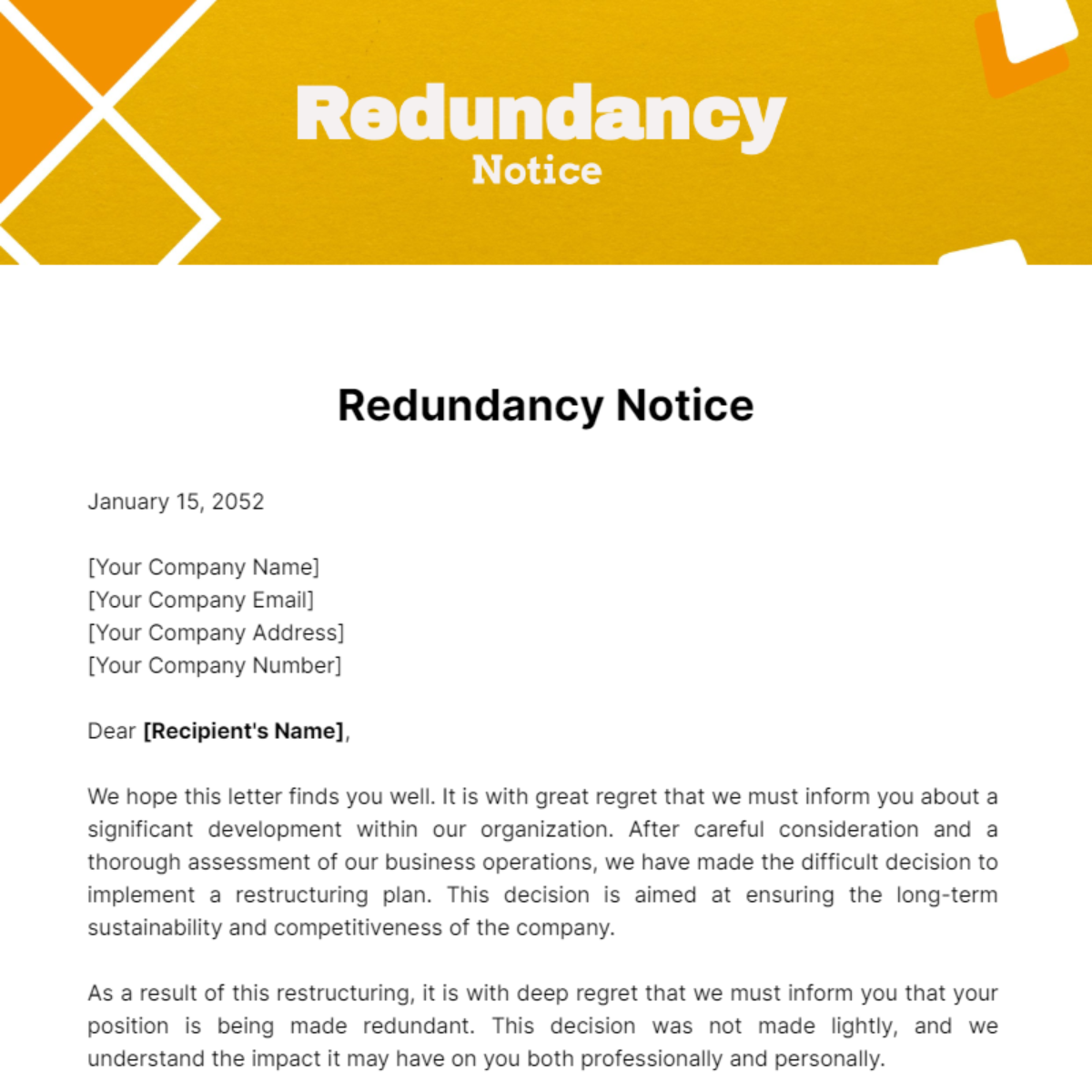What Happens to Redundancy If Company Goes Bust? A Guide to Your Rights
What Happens to Redundancy If Company Goes Bust? A Guide to Your Rights
Blog Article
Checking Out the Interaction Between Firm Redundancy and Business Versatility for Future Development
In the vibrant landscape these days's service world, the elaborate connection between firm redundancy and organizational versatility arises as an essential factor for sustained growth and success. Business often deal with the difficulty of striking a delicate balance between preserving a level of redundancy to mitigate risks and promoting adaptability to respond swiftly to the ever-evolving market needs. This delicate interplay holds the key to not just making it through in stormy times however also flourishing despite uncertainty. As we explore the multifaceted dimensions of this interaction, appealing insights into just how companies browse these complexities to lead the way for future development await.
Relevance of Business Redundancy
Business redundancy is a critical component that improves business strength and reduces operational risks. By including redundancy procedures within the business framework, companies can better withstand unforeseen disturbances and changes in the business setting. Redundancy functions as a strategic buffer, permitting companies to adjust and react effectively to unforeseen difficulties without jeopardizing crucial operations.
One key element of the relevance of firm redundancy is its role in guaranteeing continuity during times of crisis. When faced with abrupt changes or emergency situations, redundant systems, resources, or workers can step in to keep essential features and protect against prevalent disruptions. This continuity not only safeguards the firm's credibility and consumer count on but also reduces economic losses and functional downtime.

Strategies for Organizational Versatility

Another essential strategy is spending in modern technology and infrastructure that can sustain versatility and scalability. Carrying out electronic tools, automation, and data analytics can improve operations, enhance effectiveness, and offer important understandings for informed decision-making. In addition, creating adaptable organizational frameworks that permit quick modifications to market dynamics and consumer demands is crucial for staying affordable in a swiftly progressing environment. By proactively recognizing prospective disturbances and chances, companies can proactively adapt and grow in an ever-changing business landscape.
Harmonizing Redundancy and Flexibility
Accomplishing an unified equilibrium between functional redundancy and business adaptability is vital in browsing the intricacies of a dynamic service atmosphere. Redundancy within a company offers a safety and security net, making sure connection and stability in procedures. However, an excess of redundancy can result in inadequacies and impede flexibility to transforming market conditions. On the other hand, business adaptability permits firms to respond without delay to exterior interruptions and take brand-new chances. Striking the appropriate equilibrium in between redundancy and flexibility is a delicate process that needs a deep understanding of the organization's goals, sector dynamics, and threat tolerance.
To accomplish this balance, companies require to perform routine assessments of their procedures to determine areas where redundancy is required for risk reduction and where versatility can drive advancement and growth. Carrying out versatile frameworks, cultivating a society of continual understanding and improvement, and urging open communication across all degrees of the company are key techniques to balance redundancy and versatility properly. By straightening these two vital components, firms can position themselves for lasting development and success in an ever-changing company landscape.
Study on Adaptation Success
In analyzing instances of successful organizational adjustment, it ends up being obvious that the interaction in between operational redundancy and adaptability is a specifying aspect in shaping resistant organizations. A DVD rental service, Netflix demonstrated exceptional versatility by straight from the source transitioning right into a streaming system when digitalization interrupted the market. These situation researches underscore the value of operational redundancy paired with business adaptability in fostering long-term development and competitiveness.
Structure Resilience for Future Development
Structure durability for future growth calls for a calculated positioning of operational procedures with market dynamics and arising fads. Business should adapt to transforming environments by promoting a culture of flexibility, technology, and constant enhancement. Resilience includes not just jumping back from problems but likewise proactively getting ready for future difficulties. One key aspect of structure resilience is buying robust risk management strategies to alleviate possible disruptions. This consists of scenario preparation, diversifying supply chains, and establishing backup strategies for various backups (who pays redundancy money).
Additionally, cultivating strong connections with stakeholders, such as consumers, workers, providers, and the neighborhood, is vital for preserving and weathering unpredictabilities count on and support throughout rough times. Efficient communication and transparency play a vital duty in building strength, as they assist facilitate and line up assumptions cooperation in navigating unpredictabilities.
Furthermore, companies need to focus on learning and growth initiatives to upskill workers and equip them with the essential devices to adapt to transforming situations. By buying their workforce, business can improve their flexibility and agility, ultimately strengthening their strength for lasting future development.
Conclusion

In the vibrant landscape of today's business world, the elaborate partnership in between company redundancy and organizational versatility arises as a vital factor for sustained development and success. Firms often deal with the obstacle of striking a check it out fragile equilibrium in between maintaining a degree of redundancy to mitigate threats and fostering adaptability to respond quickly to the ever-evolving market demands.To achieve this balance, companies need to conduct routine analyses of their operations to determine locations where redundancy is required for danger mitigation and where flexibility can drive technology and development.In verdict, the interaction in between company redundancy and business flexibility is essential for future development. Building resilience have a peek at this site through a mix of redundancy and flexibility will ensure that firms are prepared for the difficulties of the future.
Report this page